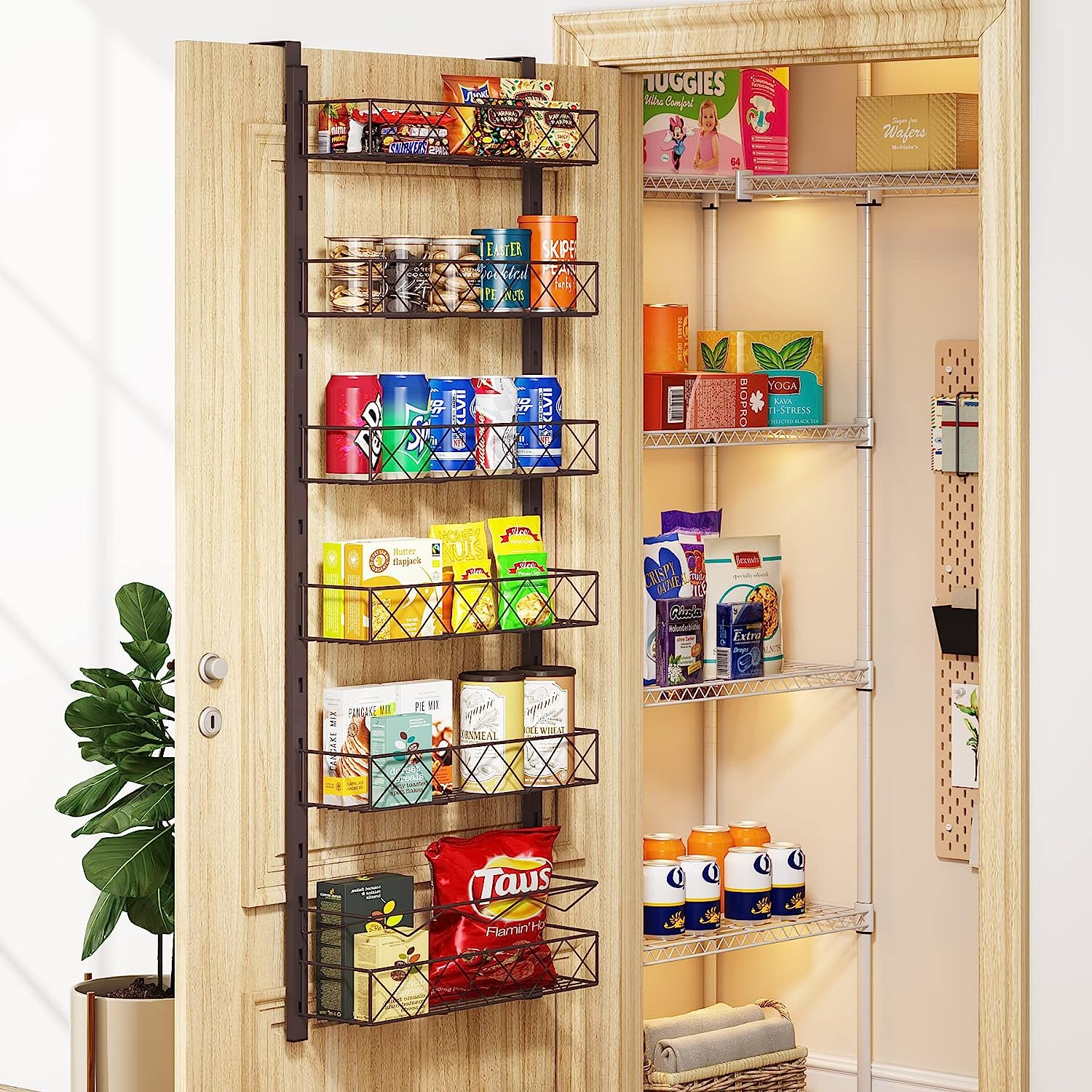

Articles
How To Organize A Walk-in Pantry
Modified: October 28, 2024
Looking to organize your walk-in pantry? Discover effective pantry storage solutions to maximize space and keep your kitchen clutter-free.
(Many of the links in this article redirect to a specific reviewed product. Your purchase of these products through affiliate links helps to generate commission for Storables.com, at no extra cost. Learn more)
Introduction
A well-organized walk-in pantry can make a world of difference in your daily life. It not only saves you time and frustration when preparing meals, but it also adds a touch of elegance and efficiency to your kitchen. In this article, we will explore practical tips and strategies on how to organize a walk-in pantry, transforming it into a functional and aesthetically pleasing space.
Imagine stepping into your pantry and finding everything neatly arranged and easily accessible. No more hunting through cluttered shelves or forgetting what you already have. With a few simple steps, you can create a space that maximizes storage, enhances visibility, and keeps your pantry items in order.
Whether you have a spacious walk-in pantry or a smaller storage area, the principles of organization remain the same. The key is to create a system that works for you and your family’s needs. Let’s dive into the process of decluttering, sorting, choosing storage solutions, maximizing space, categorizing items, implementing a labeling system, and effectively maintaining your pantry.
By following these steps, you’ll be on your way to creating the pantry of your dreams. Get ready to transform this often-overlooked space into a functional and organized area that will make grocery shopping, meal planning, and cooking much easier and more enjoyable. Let’s begin the journey towards a well-organized walk-in pantry!
Key Takeaways:
- Transform your walk-in pantry into an efficient and visually appealing space by decluttering, categorizing, and implementing a labeling system. Regular maintenance ensures a well-organized and functional pantry for stress-free meal preparation.
- Maximize space and choose the right storage solutions to create an organized walk-in pantry. Utilize vertical space, categorize items, and maintain order through regular cleaning and maintenance.
Decluttering and Sorting
The first step in organizing your walk-in pantry is to declutter and sort through your existing items. Begin by emptying the entire pantry, removing everything from the shelves and placing them on a nearby table or countertop. This will give you a clean slate to work with and allow you to assess the contents of your pantry.
Now it’s time to evaluate each item individually. Check the expiration dates and discard any items that have passed their prime or are no longer safe to consume. Be ruthless in your decision-making, and don’t hold onto items that you rarely use or that have been sitting there for months.
Next, sort the remaining items into categories. Group similar items together, such as canned goods, grains, condiments, snacks, and baking supplies. This will help you identify how much space you’ll need for each category and make it easier to create an organized system within your pantry.
As you sort through your items, take note of any duplicates or items that you have an excess of. Consider donating these items to a local food bank or charity to help those in need. By decluttering and donating, you can create space in your pantry while making a positive impact on your community.
Once you have decluttered and sorted your items, it’s time to move on to the next step: determining your storage needs.
Determining Storage Needs
Now that you have decluttered and sorted your pantry items, it’s time to determine your storage needs. Take a step back and assess the available space in your walk-in pantry. Measure the dimensions of your shelves, drawers, and any other storage areas to help you plan and purchase the right storage solutions.
Consider the types of items you have and how you would like to organize them. Do you have a large collection of spices that need separate storage? Will you be storing bulky items like small appliances or large containers? Understanding what you have and how you want to organize it will help you make informed decisions when choosing storage solutions.
Utilize the vertical space in your pantry by installing additional shelving or hanging racks. This will allow you to maximize storage and create more room for your items. If you have deep shelves, consider using storage bins or pull-out organizers to make items in the back more accessible. Adjustable shelving is also a great option, as it allows you to customize the height of each shelf to accommodate different sized items.
When determining your storage needs, also consider the aesthetics of your pantry. Do you prefer clear containers to showcase your pantry items, or do you prefer a more uniform look with matching storage bins? Choose storage solutions that align with your personal style and create a cohesive and visually appealing pantry.
Lastly, don’t forget about accessibility. Items that you frequently use should be easily reachable and at eye level. Reserve the higher and lower shelves for items that are used less frequently or for bulky items that aren’t accessed as often.
By determining your storage needs, you can make thoughtful decisions about the type and layout of storage solutions that will work best for your walk-in pantry.
Choosing Storage Solutions
With your storage needs determined, it’s time to choose the right storage solutions for your walk-in pantry. Consider the following options:
- Clear Containers: Opt for clear containers, such as glass jars or plastic bins, to store dry goods like grains, pasta, and cereal. These containers not only keep your items fresh and protected from pests but also allow you to easily see what you have at a glance.
- Baskets or Wire Bins: Baskets or wire bins are perfect for storing smaller miscellaneous items or items that don’t stack well, such as snacks, spices, and condiments. The open design allows for good airflow and makes it easy to locate items.
- Pull-Out Drawers: If your pantry shelves are deep, consider installing pull-out drawers. These drawers allow you to access items at the back of the shelf without having to remove everything in front. They are particularly useful for storing canned goods, jars, and spices.
- Lazy Susans: Lazy Susans are rotating trays that are excellent for organizing spices, sauces, and other small items. They make it easy to access items stored in the back without having to shuffle through everything in front.
- Door Organizers: Take advantage of the space on the inside of your pantry door by installing door organizers. These can be used to hold small jars, spices, or even tools like measuring cups and spoons. Maximizing door space helps free up shelf space for bulkier items.
When choosing storage solutions, keep in mind the size and quantity of each category of items you have. Measure your shelves and pantry space accurately to ensure that the storage solutions you choose fit properly. A combination of different storage options can add versatility and functionality to your pantry.
Furthermore, consider the ease of cleaning and maintenance when selecting storage solutions. Opt for containers and bins that are easy to wash and keep clean. Avoid materials that may absorb odors or stain easily, especially for food items that have strong odors or sauces that may spill.
By carefully selecting the right storage solutions, you can effectively utilize the available space in your walk-in pantry and create an organized and visually appealing storage system.
Maximizing Space
In a walk-in pantry, maximizing space is crucial to ensure efficient organization. Here are some strategies to help you make the most of your available space:
- Utilize vertical space: Install additional shelving or use hanging racks to take advantage of the vertical space in your pantry. This allows you to stack items and store them efficiently, creating more storage capacity.
- Use the back of doors and walls: Install hooks or racks on the back of pantry doors or walls to hang items like aprons, oven mitts, or even cutting boards. Use magnetic strips to store metal spice containers or knives. This will free up valuable shelf space and declutter your pantry.
- Invest in stackable containers: Consider using stackable containers for items like snacks, canned goods, or spices. By stacking these items vertically, you can utilize the available space more efficiently while keeping everything visible and accessible.
- Make use of under-shelf organizers: Under-shelf organizers are a fantastic way to create extra space within your pantry. These wire or plastic racks can be attached to the underside of shelves, providing additional storage for lightweight items like spices, small jars, or even paper towels.
- Think outside the box: Get creative with your storage solutions. Use tension rods to create dividers for cutting boards or baking sheets. Utilize clear plastic bins to corral loose items or create mini sections for different categories of items within larger areas of your pantry.
Remember to regularly reassess and rearrange items in your pantry to further maximize space. As you become more familiar with your organization system, you may find new ways to optimize the available space.
Moreover, be mindful of the frequency of use when arranging items. Place frequently accessed items at eye level or within easy reach. Reserve higher and lower shelves for items that are used less often or are bulkier.
By maximizing the space in your walk-in pantry, you can create a functional and efficient storage system that allows you to find items easily and make the most of your pantry’s storage capacity.
Use clear storage containers to keep items visible and organized. Group similar items together and label shelves for easy access. Consider adding shelves or baskets to maximize space.
Categorizing and Grouping Items
Categorizing and grouping items is essential for creating an organized and easily navigable walk-in pantry. Here are some guidelines to help you effectively categorize and group your pantry items:
- Create distinct categories: Start by creating clear and distinct categories for your pantry items. Common categories include canned goods, grains and pasta, snacks, baking supplies, condiments, spices, and beverages. Identify the main categories that make sense for your pantry and the items you regularly stock.
- Allocate designated areas: Assign specific shelves or sections for each category. This will not only create a logical organization system but also make it easier for you to find what you’re looking for. For example, dedicate one shelf to canned goods, another to spices, and a separate section for baking supplies.
- Consider frequency of use: Place frequently used items within easy reach, preferably at eye level or on the most accessible shelves. Reserve higher and lower areas for items that are used less frequently or are bulkier.
- Group similar items together: Within each category, group similar items together. For example, within the baking supplies category, group flours, sugars, and baking soda together. This further streamlines the organization and makes it easier to locate specific items.
- Label containers and shelves: Use labels to identify the contents of containers and the designated areas for each category. Clear and visible labels help keep everything in its proper place and allow you and your family members to easily find and return items.
When categorizing and grouping your pantry items, it’s important to consider your own personal preferences and needs. Everyone organizes their pantry differently, so adjust the categories accordingly to fit your cooking and lifestyle habits.
Additionally, periodically review and adjust your categorization system as needed. As you use your pantry and become familiar with the organization, you may find that certain categories need to be expanded or consolidated.
By categorizing and grouping your items, you’ll create a sense of order and simplicity in your walk-in pantry, making it easy to find what you need when you need it.
Labeling System
A clear and effective labeling system is essential for maintaining an organized walk-in pantry. Labels not only help you quickly locate items but also ensure that everything is returned to its designated place. Here are some tips for creating a labeling system that works for you:
- Choose the right labeling materials: Opt for labels that are durable and easy to read. Consider using adhesive labels, label makers, or even chalkboard labels for a more customizable option.
- Be consistent: Use a consistent labeling format throughout your pantry. Whether it’s labeling the fronts of containers, shelves, or bins, keep the style and placement of labels uniform for a cohesive look.
- Label containers: Label containers with the name of the item and, if applicable, the expiration date. This ensures that you use items before they expire and helps you quickly identify what you’re looking for.
- Label shelves and sections: Label shelves or sections with category names to clearly define the designated areas. This helps family members or guests return items to their proper place, maintaining the organization of your pantry.
- Consider alternative labeling methods: If adhesive labels don’t work for your containers, explore alternative options like hanging tags, clip-on labels, or reusable chalkboard labels. These can be easily switched or updated as needed.
- Use color coding: Consider using color-coding in your labeling system. Assign a specific color to each category or use color coding to indicate different food groups. This visual cue can make it even easier to identify items at a glance.
When implementing your labeling system, involve other household members to ensure everyone understands and follows the designated organization and labeling methods. Encourage everyone to adhere to the system to maintain order and make the most of your walk-in pantry.
Remember to regularly review and update your labels as needed, especially when you rearrange or add new items to your pantry. This will ensure that your labeling system remains accurate and efficient over time.
A well-executed labeling system can significantly contribute to an organized and functional walk-in pantry, making it effortless to locate items and maintain orderliness.
Maintaining Order
Maintaining the order and organization of your walk-in pantry is key to its long-term functionality. Here are some tips to help you keep your pantry in order:
- Regularly declutter: Set aside some time every few months to declutter your pantry. Remove any expired or unused items, and consider donating excess items to minimize clutter and ensure that your pantry stays organized.
- Return items to their designated places: Encourage everyone in your household to return items to their designated spots after use. Make it a habit to put things back in their proper place to maintain the organization of your pantry.
- Keep an inventory: Consider keeping an inventory list of your pantry items. This will help you keep track of what you have, avoid overstocking, and make grocery shopping easier. Regularly update the inventory as items are used or added to your pantry.
- Rotate items: Practice a “first in, first out” approach, especially for perishable items. Before adding new items to your pantry, use older ones first. This prevents items from going unused or expiring.
- Wipe down shelves and containers regularly: Regularly clean and wipe down your shelves, containers, and any other storage solutions to maintain cleanliness and hygiene. This prevents crumbs or spills from accumulating and keeps your pantry looking its best.
- Reassess and adjust as needed: Periodically review your pantry organization and make adjustments as your needs change. You may find that certain categories need to be rearranged or new storage solutions are necessary. Stay flexible and adapt your system to best suit your evolving needs.
By incorporating these practices into your routine, you can ensure that your walk-in pantry remains organized and functional over time. Consistency and regular maintenance are key to maintaining order and maximizing the benefits of an organized pantry.
Remember, organizing your walk-in pantry is an ongoing process. By continuously focusing on maintaining order, you’ll be able to enjoy the benefits of a well-organized, functional pantry for years to come.
Cleaning and Maintenance
To keep your walk-in pantry in top shape, regular cleaning and maintenance practices are essential. Here are some tips to help you maintain cleanliness and ensure the longevity of your pantry:
- Establish a cleaning schedule: Set a regular schedule for deep cleaning your pantry. It could be once a month or every few months, depending on your usage. This will help prevent dirt, dust, and spills from accumulating.
- Remove all items before cleaning: Before cleaning, remove all items from your pantry shelves. This will allow you to thoroughly clean all surfaces and eliminate any hidden dirt or debris.
- Clean shelves and surfaces: Use a mild cleaning solution and a clean cloth or sponge to wipe down the shelves and surfaces in your pantry. Pay attention to corners, edges, and tight spaces. Be sure to dry the shelves completely before placing items back on them.
- Check for pests: Regularly inspect your pantry for signs of pests like insects or rodents. Take preventive measures like sealing cracks or gaps and putting pest repellents to keep unwanted visitors at bay.
- Monitor expiration dates: Pay attention to the expiration dates of items in your pantry. Regularly check and discard expired products to maintain freshness and prevent any unpleasant surprises when using items for cooking.
- Organize and rearrange as needed: During the cleaning process, take the opportunity to reassess your pantry organization. Consider rearranging shelves or adjusting storage solutions to optimize space and improve functionality.
- Keep an eye on spills and messes: Promptly clean up any spills or messes as they occur. This will prevent stains, odors, and the attraction of pests. Regularly inspect your pantry for any spills that might have gone unnoticed and clean them as soon as possible.
By incorporating these cleaning and maintenance practices into your routine, you can ensure that your walk-in pantry remains clean, hygienic, and organized. Regular maintenance helps to prolong the life of your pantry and preserves the quality of the items stored within it.
Remember, prevention is key when it comes to maintaining a clean and functional pantry. By practicing good hygiene, regularly inspecting your pantry, and promptly addressing any issues, you can enjoy a fresh and well-maintained space for all your pantry needs.
Read more: How To Organize A Walk-In Closet
Conclusion
Organizing a walk-in pantry not only enhances the functionality of your kitchen but also brings a sense of order and efficiency to your daily cooking routines. Through the process of decluttering, determining storage needs, choosing storage solutions, maximizing space, categorizing items, implementing a labeling system, and maintaining order, you can transform your pantry into an organized and enjoyable space.
Remember that organizing your walk-in pantry is a continuous process. Regularly reassess your pantry’s organization as your needs change and adjust accordingly. Keep up with cleaning and maintenance practices to ensure a clean and hygienic environment for your pantry items.
As you maintain an organized pantry, you’ll experience the numerous benefits it brings. Meal preparation becomes easier and more efficient, grocery shopping becomes streamlined, and you’ll waste less time searching for items. Plus, with a visually appealing and well-organized pantry, you’ll feel inspired and motivated to create delicious meals for yourself and your family.
Take the time to personalize your pantry organization to suit your own cooking style and lifestyle. Experiment with different storage solutions, labeling systems, and categorization methods until you find what works best for you.
In conclusion, organizing a walk-in pantry is a worthwhile investment of time and effort. It will not only simplify your cooking and meal planning but also enhance the overall functionality and aesthetics of your kitchen. Start implementing these tips and strategies today, and enjoy the benefits of a perfectly organized walk-in pantry.
Frequently Asked Questions about How To Organize A Walk-in Pantry
Was this page helpful?
At Storables.com, we guarantee accurate and reliable information. Our content, validated by Expert Board Contributors, is crafted following stringent Editorial Policies. We're committed to providing you with well-researched, expert-backed insights for all your informational needs.
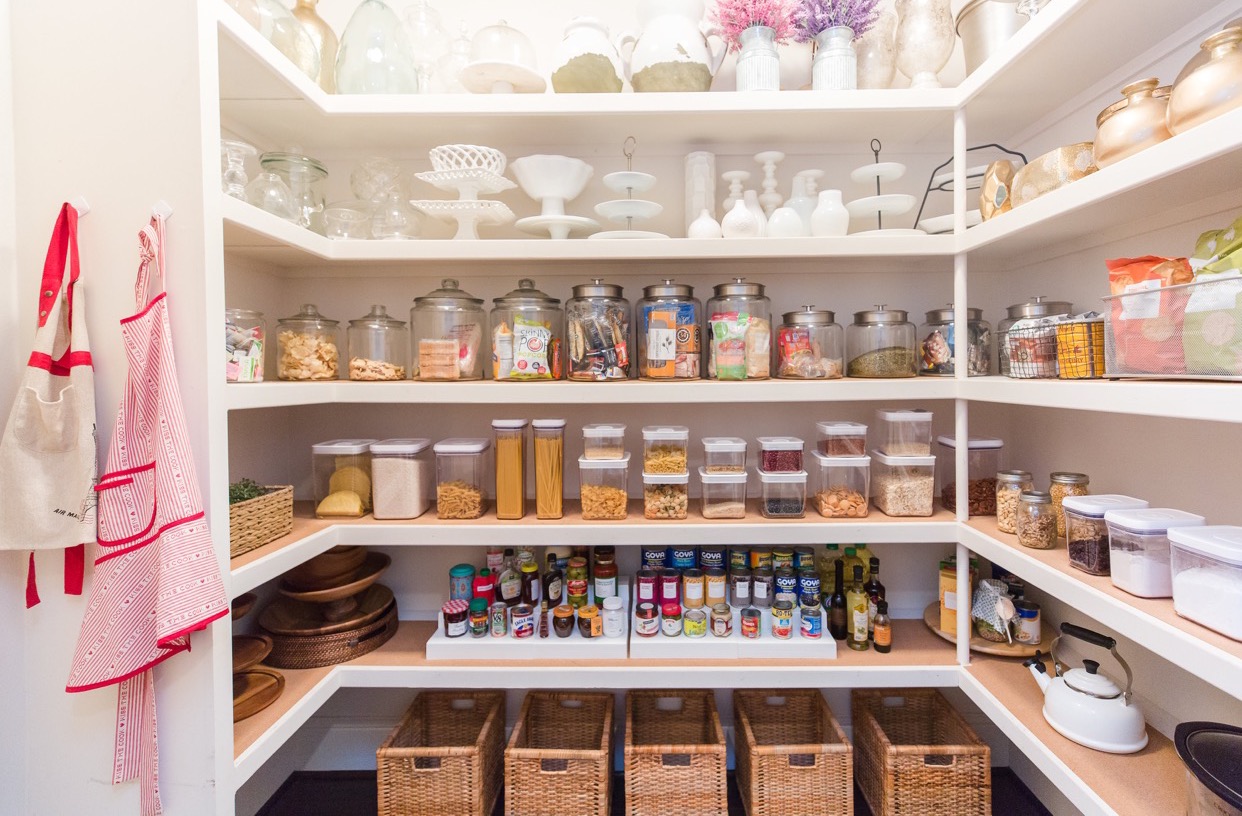
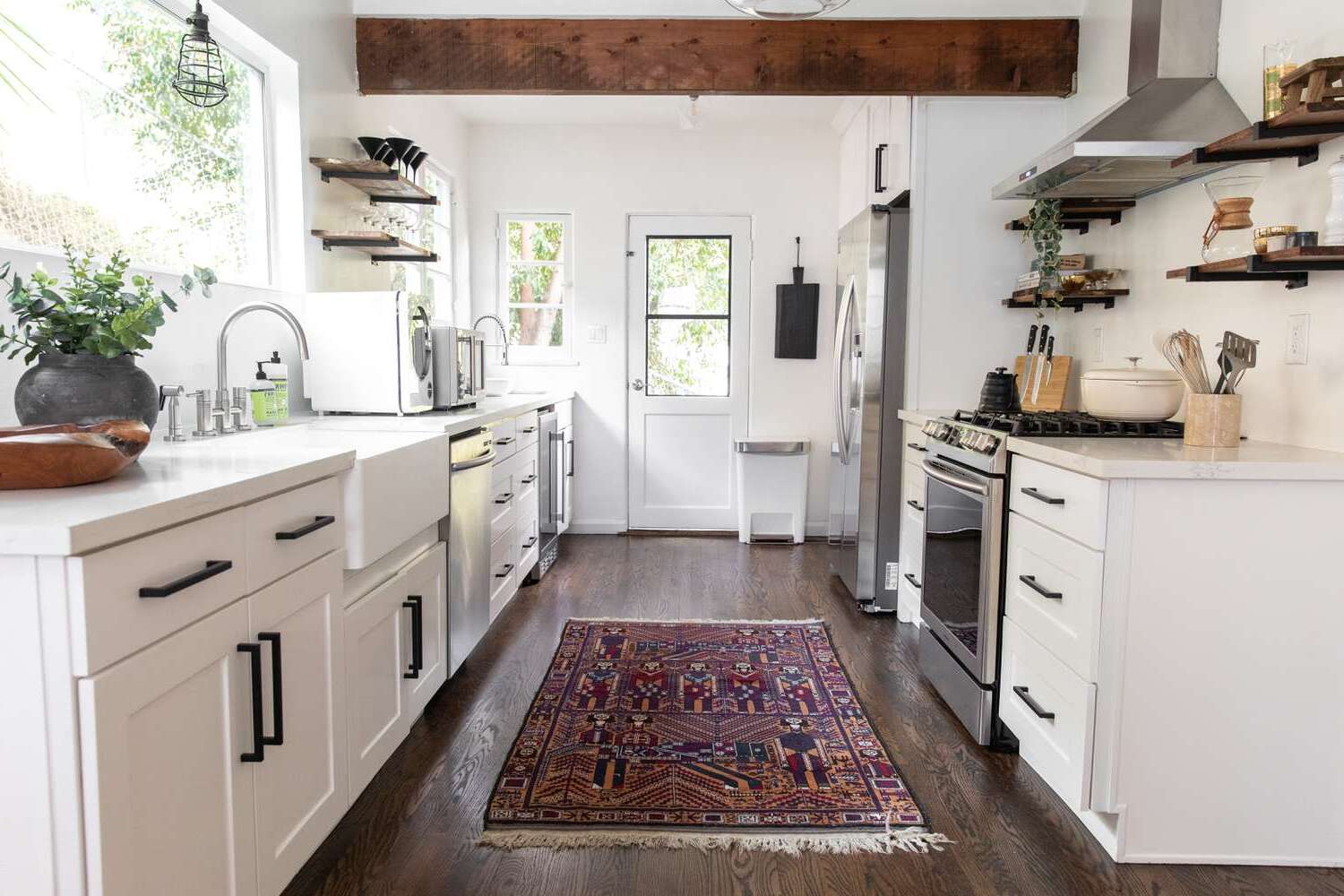
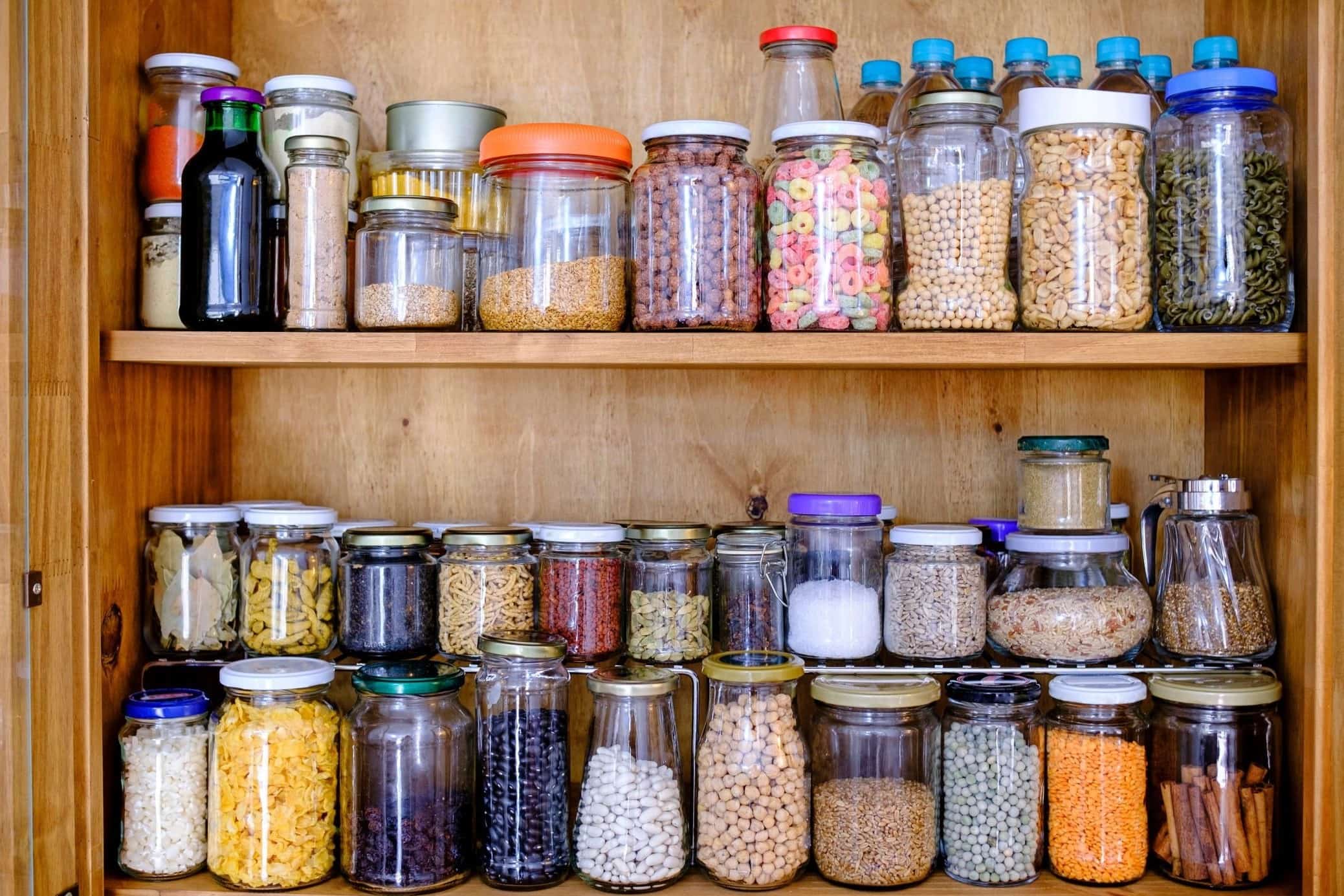
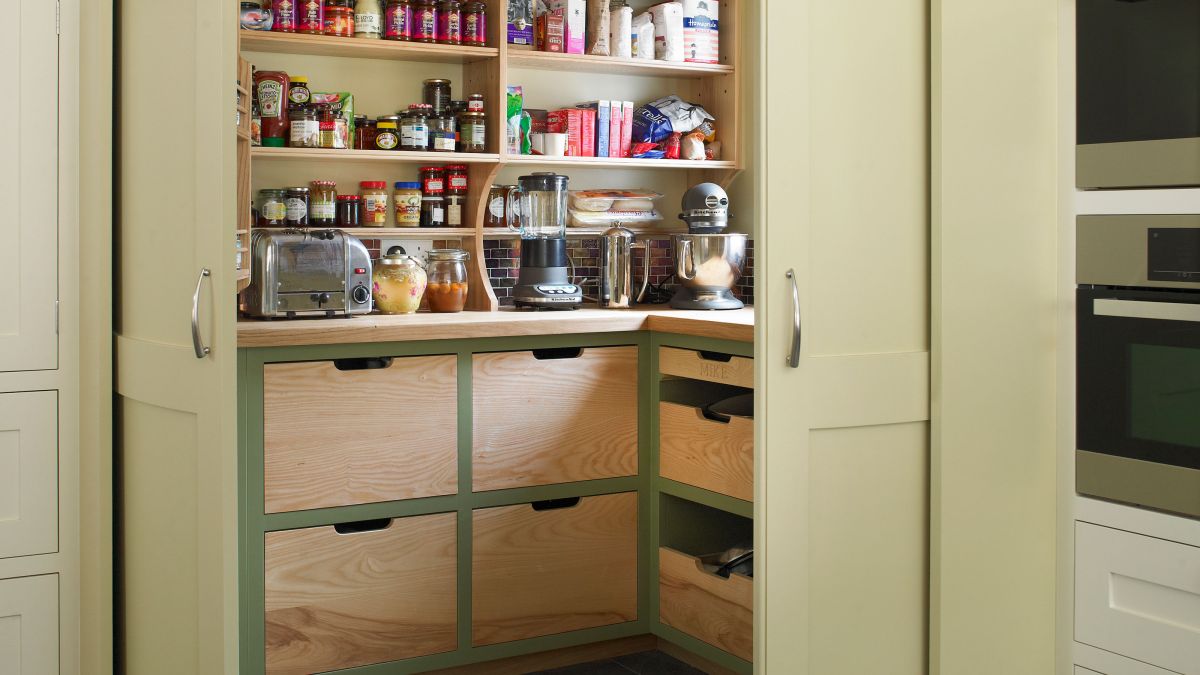
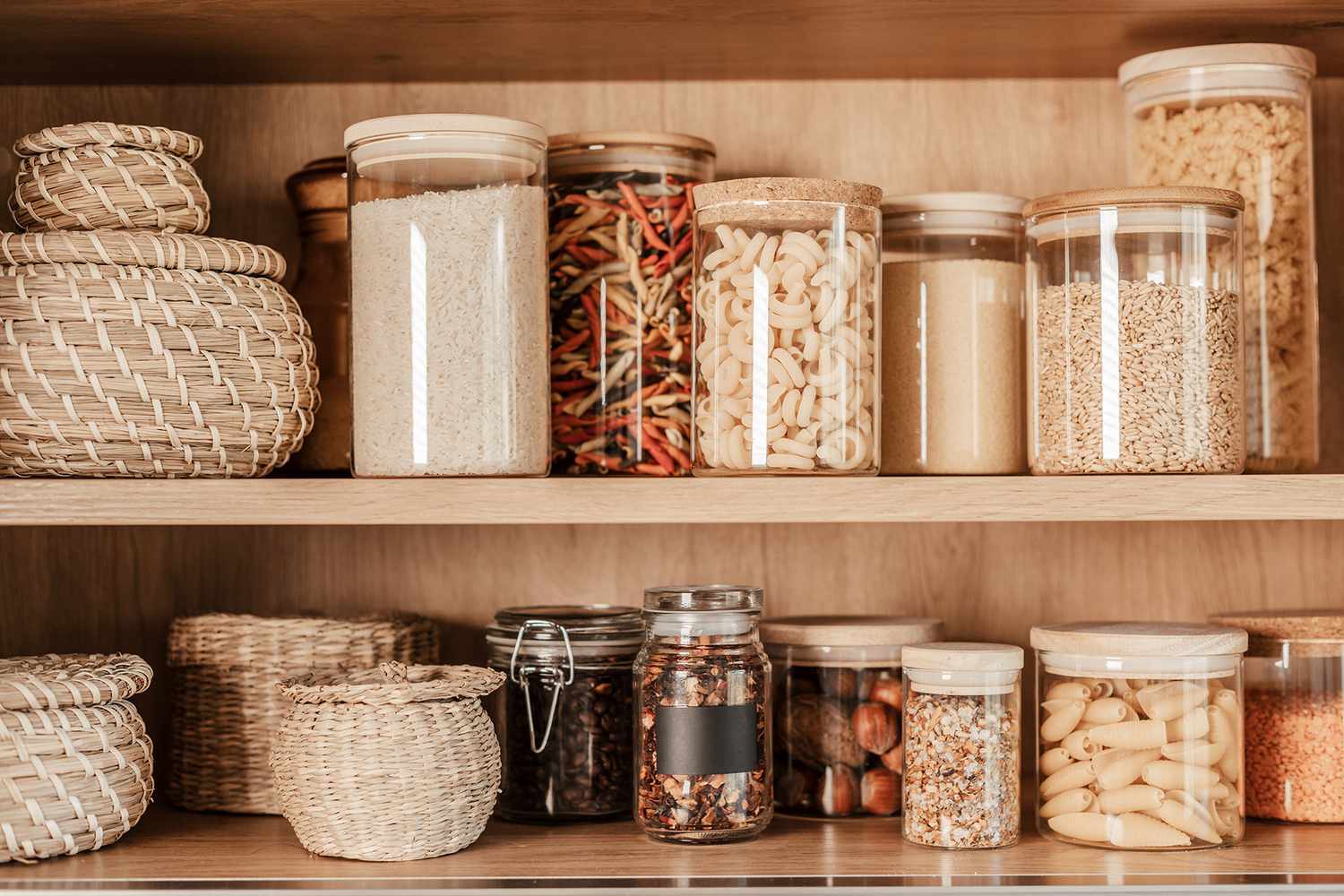
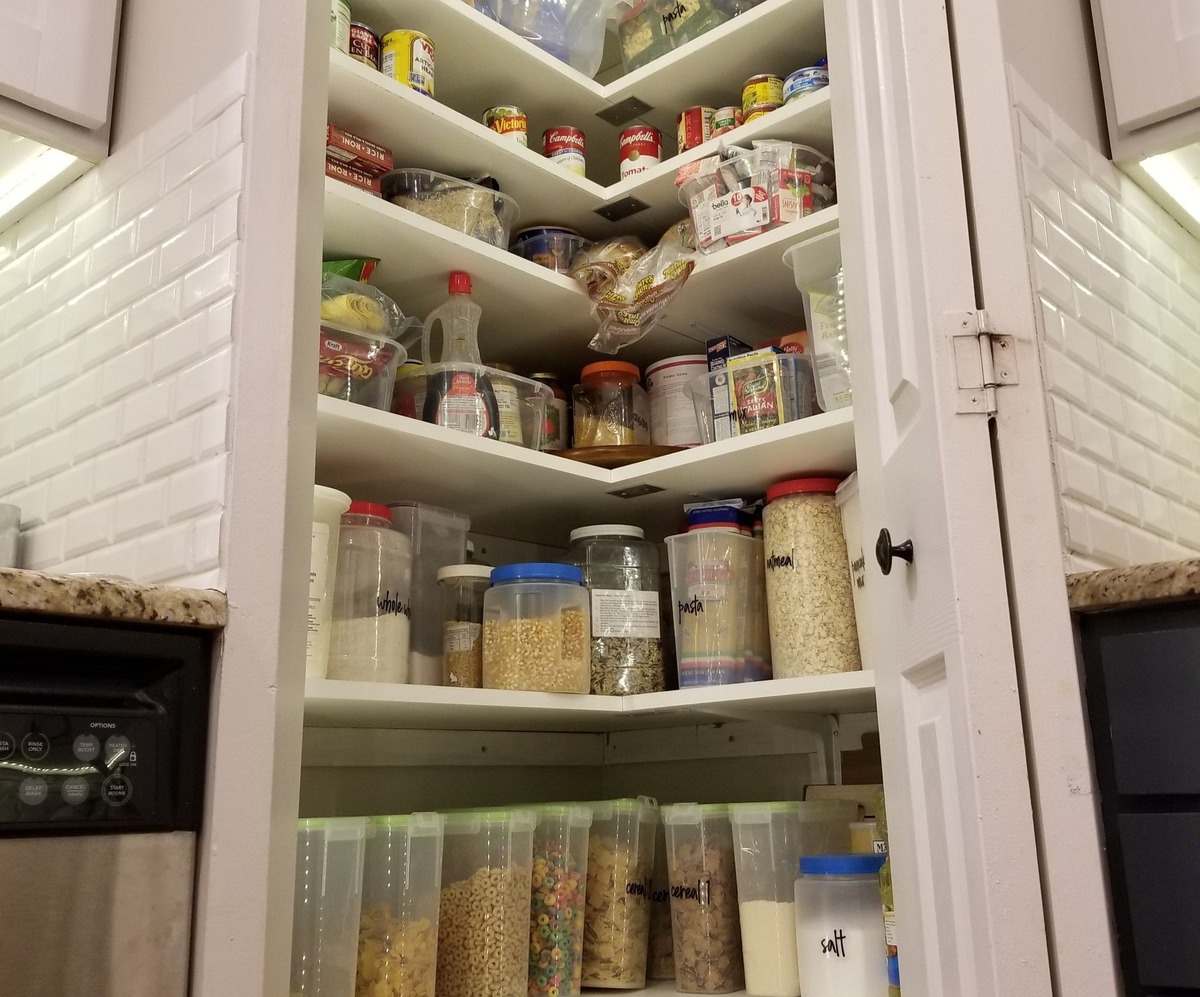

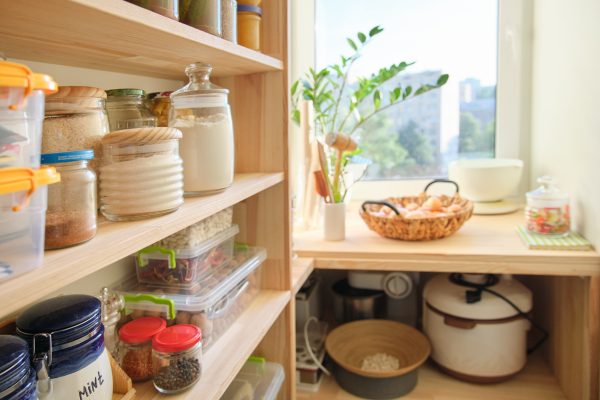
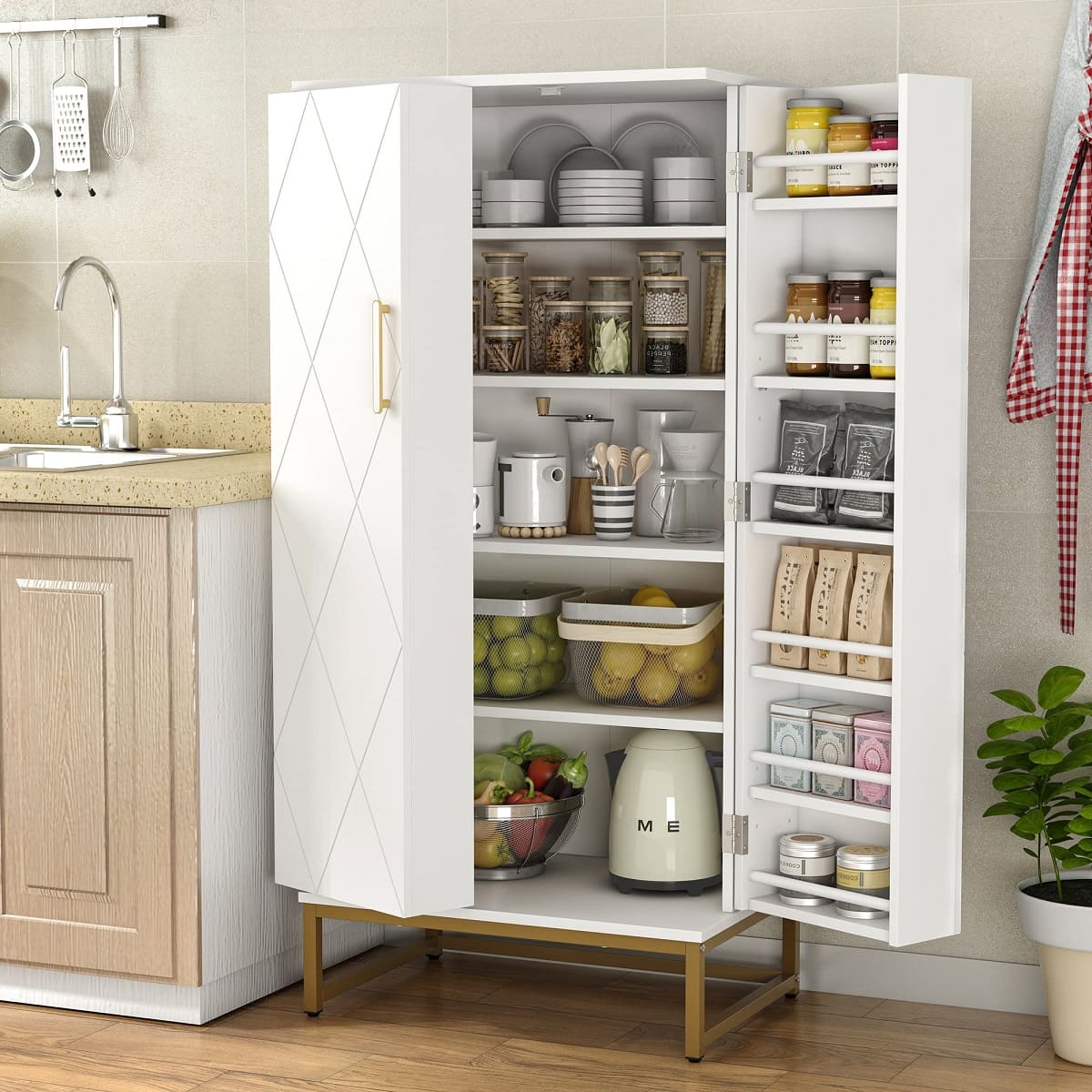

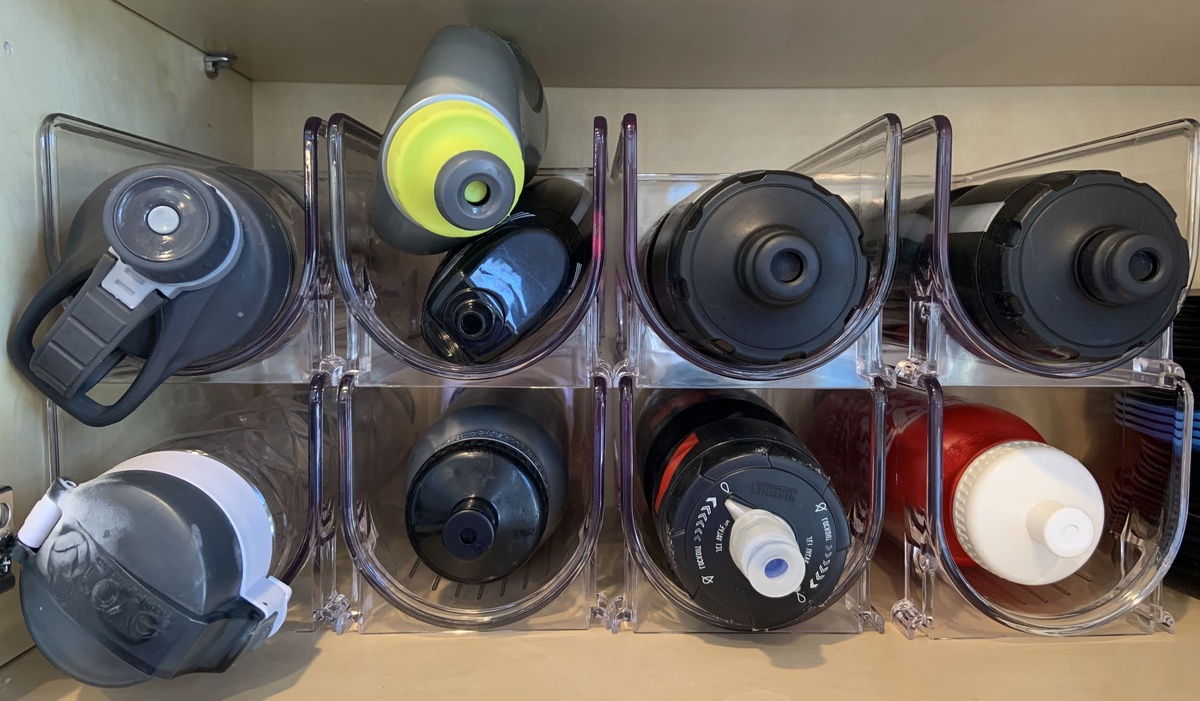
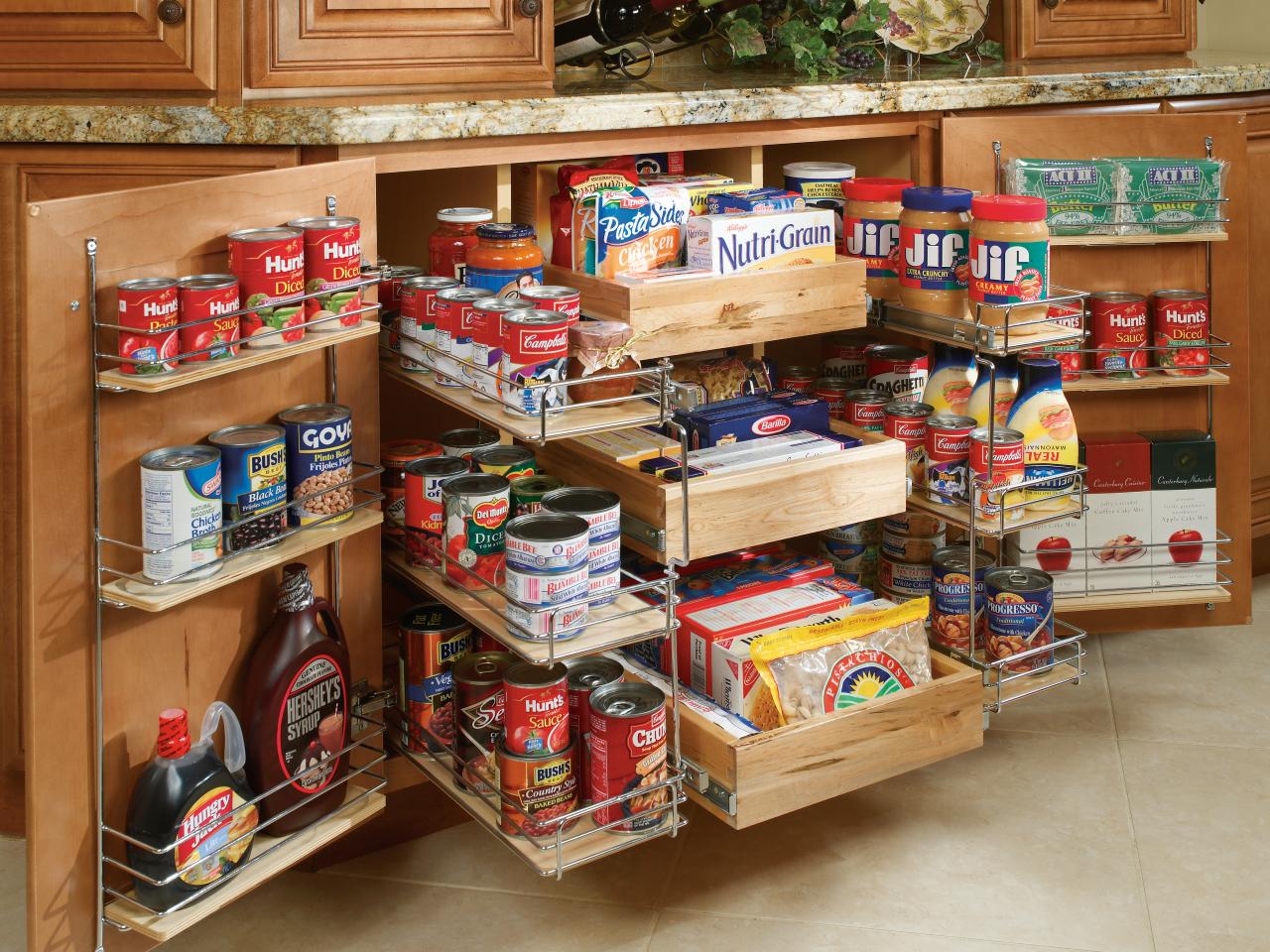
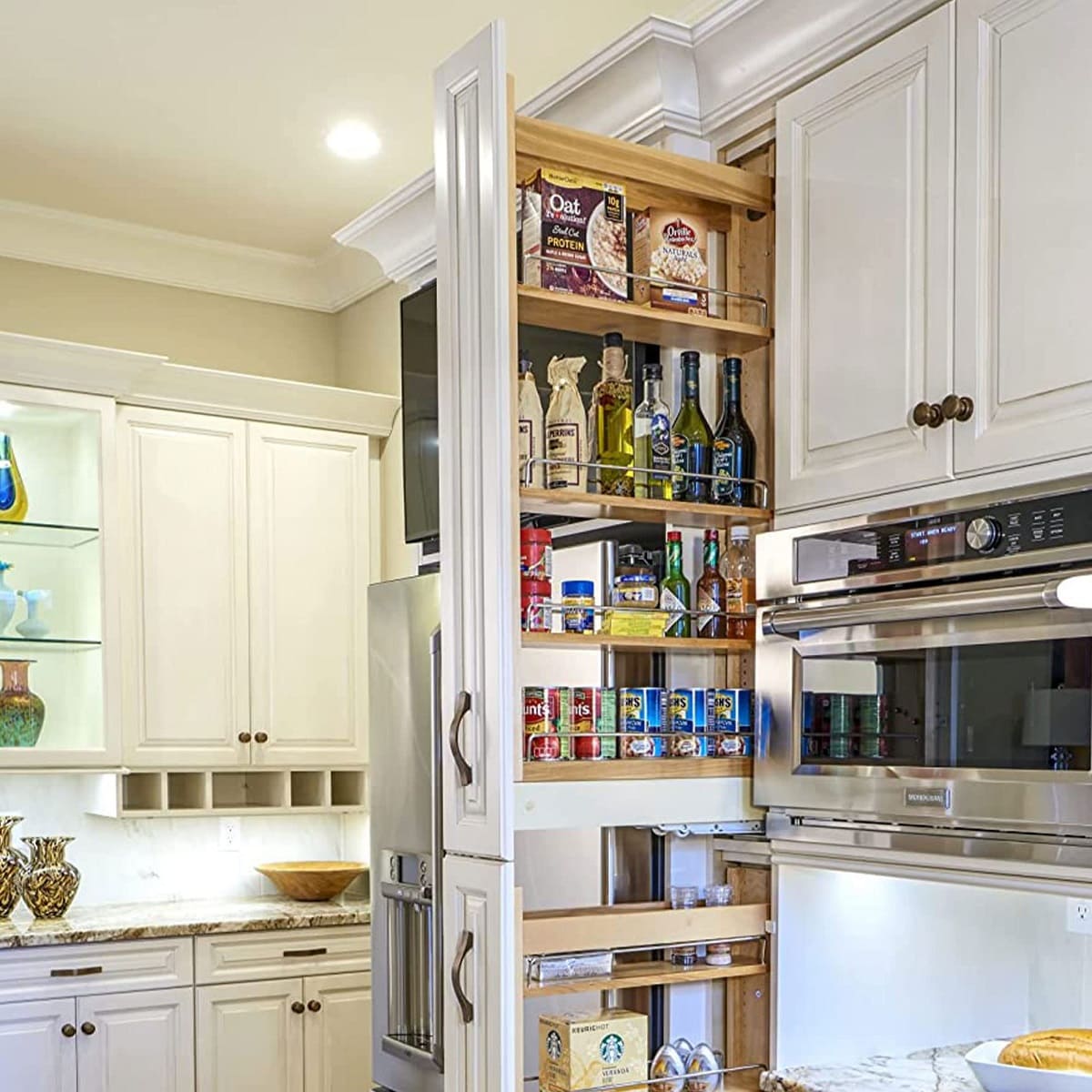

0 thoughts on “How To Organize A Walk-in Pantry”